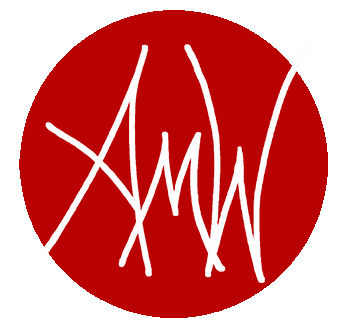Watercolor tips
- Andrea Michelle Wood
- Oct 28, 2015
- 3 min read

I’m an art teacher, but my certification is through an alternative certification method. I don’t have a formal art education. I haven’t taken many traditional art classes. My grasp on art is self-taught through trial and error or gleaned from blogs, books and YouTube. But I’m always searching for new avenues to push myself as an artist and learn from every mistake and success.

This week, watercolor was my experiment. My experience with watercolor before yesterday was very elementary, but I discovered I really like watercolor. I can’t wait to play around with this medium again in the near future! This is my watercolor landscape, and it's far from perfect. But I'll share my trial and error process and some tips from my artist sister. It's not much of an instruction manual, but I hope you are encouraged to give watercolor a try.
Supplies: A set of watercolor paints (look for high quality paints in tubes, not the dry disk sets from the elementary school supply list); a palette with several large wells; watercolor paper (I used an 18X24 pad), pencil, cup of water, paper towels, a set of brushes/sponges (look for a high quality set with a variety of round, pointed and flat brushes. You might also want to try a natural sponge)

Step 1: Select a reference picture or draw a rough sketch of your ideas. Be carefully to avoid plagiarism. Recreating another artist’s work can be a great learning experience, but you cannot sign your own name to the product without acknowledging the original reference. Don’t display copied artwork, post it online or enter it in a contest unless you have given the original artist full credit for the idea and framework.
I chose I photo I took while visiting Glacier National Park.

Step 2: Practice on a smaller scale. Try out different techniques, brushes and sponges to see what will give you the desired effect.
Step 3: Draw a very light pencil sketch to layout the framework of your picture. I drew the boat, the waterline and a very rough outline of the mountains.
Step 4: (Tip of my sister who actually knows what she’s talking about.) Prepare your paper for painting. Wash the whole paper with a watered-down layer of a light background color. I left a few areas I had drawn out blank because I wanted the pure white of the paper to show without even a light wash of the pinkish color I used as my background. If you plan to lay any other color over the background, the color wash will fade away. A large flat wide brush will work best for this step.
Step 5: Beginning with the most distant areas of your background and working forward, layer in your background and negative space foreground. I worked around the main focal point of my piece (the boat) and tried not to get any paint in the reserved area. Let your paper dry before continuing.
Step 7: When I felt I had the basic composition down, I focused on painting the boat while the rest of the paint/paper dried. Finally, I checked the piece from a distance, compared and contrasted it with my reference photo, then polished the areas that stood out to me. (I actually repeated that last little bit over and over again. As some point you have to just put the paint brush down.)
Tips:
~When you get one area of the picture done the way you want it, let the paper dry before working on overlapping areas.
~If you make a mistake or get an area too dark or the wrong color, carefully apply clean water to the affected area and dab the clean water off with a paper towel (don’t rub with the paper towel or you’ll ruin the texture of your paper, especially if it’s wet.)
~Avoid overworking the paper, if you overwork watercolor paper with too much water and brushing, it will eventually begin to pill up as fibers of paper come lose and clump together. If you do get paper lint in your paint, carefully use a dry brush to remove the clumps.
~Don’t go into watercolor with the intension of painting realism. If you chose a photo as your reference, understand that the finished painting will not look exactly like the picture. Photos can be a good guide for framing your picture and observing subject matter, but recreating one is an unrealistic goal.
I discovered this week that I love watercolors. Try it. You might just feel the same way.































Comments